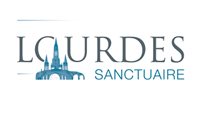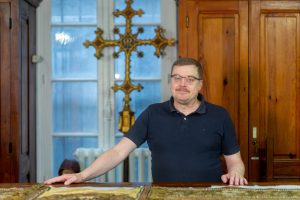The Historical Resources Centre at the Sanctuary of Our Lady of Lourdes
_________________
The creation of the Historical Resource Centre (HRC) at the Sanctuary of Our Lady of Lourdes marks a major turning point for the preservation and dissemination of the shrine’s remarkable heritage. Centralising all collections in one location meets a strategic objective:
• to ensure that our heritage is preserved in a fitting and secure environment.
• to provide a space for exhibitions and communication on cultural events at the Sanctuary.
• to provide a reference facility open to all.
The project aims to optimise and streamline conservation sites by consolidating collections into a single Historical Resource Centre. This centre will bring together both movable and written heritage, thus forming a coherent and centralised facility.
Currently scattered across several sites, the collections needed to be brought together to facilitate the implementation of a rigorous conservation programme: SAS disinfection, dust removal and sorting areas, unloading and storage docks, all under optimal atmospheric conditions and in compliance, as far as possible, with the standards set out in the Vade-mecum of Preventive Conservation (C2RMF, 2005/2013).
This project is essential not only to protect this unique historical heritage, but also to facilitate access to it for researchers, students and members of the public in search of new information. The HRC will also be a cultural centre, a place for debate and dissemination.
An exhibition space will showcase the treasures held by the Sanctuary, including its wealth of art and artefacts belonging to pilgrims, both famous and anonymous. By centralising textiles, statuary, liturgical objects and other collections, the HRC will ensure their preservation while facilitating their use in exhibitions, publications and research.
This project constitutes both a necessity for the Sanctuary and a clear commitment to passing on this heritage to future generations.
The Sanctuary’s heritage is dynamic and constantly evolving.
It is not limited to conservation facilities. Liturgical objects, such as sacred vessels and vestments, regardless of their type, are regularly used for worship. Located in the heart of the ‘domaine’ and at the crossroads of the basilicas, the HRC will facilitate the movement of articles, ensure their supervision and guarantee their security.
While most of the silverware is kept in the Treasury, the Heritage wing of the CRH will house a significant part of the Sanctuary’s collections:
This ambitious project will ensure the Sanctuary’s collections are preserved in the best possible conditions and that they remain accessible for future generations. It is essential for the protection of this remarkable heritage and for ensuring it can be shared with the world. We must not forget that the Sanctuary’s heritage also belongs to its pilgrims!
The archives and libraries of the Sanctuary of Our Lady of Lourdes: a service accessible to all.
The archives and libraries of the Sanctuary are open to pilgrims and researchers alike.
The archives represent more than one linear kilometre of documents: historical and administrative archives of the Sanctuary, as well as photographic archives.
Private archives have also been donated, such as those of Monsignor Laurentin, Father Cros and Canon Charriez.
They can be accessed in accordance with the current legal requirements.
The libraries contain nearly 17,000 titles, including the most comprehensive collection of books on the history of the apparitions at Lourdes, Bernadette and the development of the Sanctuary. It also includes the complete collection of the Sanctuary’s newspapers, as well as an impressive collection devoted to theology, worship and Marian devotion: the Marian library, is regularly updated thanks to a partnership with the French Society for Marian Studies (SFEM), which has donated its own collection to us.
The Marian Library is one of only four libraries in the world specialising in this subject, and the only one in the French language.





